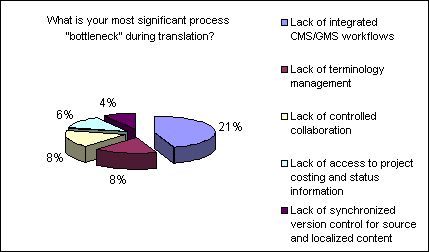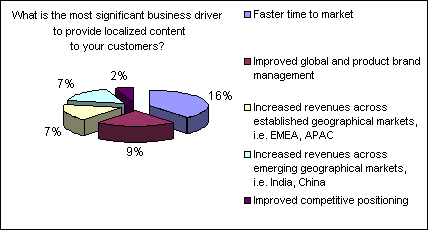Carnegie Mellon University, one of the top-ranked institutions producing technology talent, recently announced that it will offer a new Masters of Science program in software management at its Carnegie Mellon West campus in Mountain View, CA. The driving force is our increasingly global economy.
The school recognizes that going forward, developing good, useful software won’t be sufficient for managers who want to excel. The curriculum combines software engineering, one of CMU’s sweet spots, with business and organizational coursework. The goal is to prepare graduates for the reality of the software business in the 21st century. James Morris, dean of Carnegie Mellon West, says that the program’s “… cross-training gives our students the perspective and contextual understanding they need to see and seize opportunities in the global market.”
The deadline for applications is June 1. See the program description in the Carnegie Mellon West brochure for details.
Category: Content management & strategy (Page 185 of 482)
This category includes editorial and news blog posts related to content management and content strategy. For older, long form reports, papers, and research on these topics see our Resources page.
Content management is a broad topic that refers to the management of unstructured or semi-structured content as a standalone system or a component of another system. Varieties of content management systems (CMS) include: web content management (WCM), enterprise content management (ECM), component content management (CCM), and digital asset management (DAM) systems. Content management systems are also now widely marketed as Digital Experience Management (DEM or DXM, DXP), and Customer Experience Management (CEM or CXM) systems or platforms, and may include additional marketing technology functions.
Content strategy topics include information architecture, content and information models, content globalization, and localization.
For some historical perspective see:
https://gilbane.com/gilbane-report-vol-8-num-8-what-is-content-management/
Welcome to the Web Content Management blog at the Gilbane Group. I’m Tony White, the moderator of this blog and Lead Analyst for Web Content Management at the Gilbane Group. The WCM blog will serve as a forum for a wide range of business and technical users, enterprises, software vendors, system integrators, consultants, and not-otherwise-specified domain experts/novices to discuss a wide range of topics – from product-specific questions to industry trends, tried-and-true use cases to bleeding-edge technologies, caveats to best practices. A good deal of the conversation will focus on subjects such as Web 2.0, rich internet applications, usability and the user experience, vendor claims, product evaluations, application integration, user training, implementation times, industry-specific practices, regulatory compliance, localization and globalization, digital assets, Web services, content syndication, cost of ownership and return on investment, open source products and strategies, and hosted versus licensed applications – just to name a few. We will undoubtedly discuss products and technologies from vendors such as CrownPeak, Day, EMC/Documentum, IBM, Interwoven, Microsoft, RedDot, Percussion, Stellent, and Vignette, but feel free to make comments about (or from) others as well.
The rules for participation in this blog are roughly the same as those for Frank Gilbane’s CTO blog, which are listed in his July 23, 2006 entry – the exceptions being that you don’t need to be a CTO to make comments and that, while we welcome entries by guest authors, this blog will be authored, assembled, and edited primarily by me. If you would like to begin contributing to the blog, click here to submit a comment or entry.
Cheers!
Congratulations to Linda Burman, Emma Hamer, Joan Lasselle, and Travis Wissink, newly elected by their peers to serve on the board of directors of Content Management Professionals. They will step in for retiring directors Seth Gottlieb, Erik Hartman, Samantha Starmer, and Scott Abel, who resigned his seat on the board to fill the role of CM Pros executive director. Continuity on the board is provided by current director Mary Laplante, now serving the second year of a two-year term.
CM Pros members will have an opportunity to meet with the directors at the upcoming spring Summit, April 13, in San Francisco following the Gilbane conference on content technologies.
In my previous entry I wrote about the effect of working in a foreign language. I think that we will see interesting developments in tools and services targeted to people who need to work in a language other than their native language – simply because this is a rapidly growing group. Obviously there are more and more non-native English speakers using English daily at work. But as European call centers relocate to Poland and the Czech Republic, we will also see more people using German as their second language.
An interesting question is: what will happen in China and India? According to Wikipedia, India has 23 official languages (one of them is English), 800 spoken languages and 2000 dialects. In China, there are 6 to 12 main regional groups of Chinese, according to classification. A friend of mine said that China could choose English as their official langauge, just like in India. I am not quite so sure. With about 800 million Mandarin speakers, maybe we will all be learning Mandarin in the future.
Anyways, I checked the most popular blogs from Technorati, . The top 30 “most linked to” blogs included 8 blogs in a language other than English. To me, this is just a reminder that there is a world outside English.
The recording from our February 14th webinar, “Integrating Translation and Content Management Workflows” is now available here. Many thanks to Steve Billings, Senior Solutions Engineer with Idiom Technologies, and David Smith, President of LinguaLinx, for joining me for the conversation and of course, to the participants for attending.
We informally polled participants during our last webinar on globalization business drivers and published the results here. In this webinar, we asked the question again. Here’s the results:
We also added a new poll specific to integrating translation and content workflows. Here’s the results:

Clearly the subject of this webinar was right on for participants, with 21% citing “integration of CMS (content management systems) and GMS (globalization management systems) as the number #1 headache. The good news is that there are a number of market approaches to cohesive workflow integration for translation processes. We’ve provided details on our definitions of Levels 1-3 here. Steve and David presented a typical customer scenario involving all three integration levels during the webinar. Check it out.
If so…
The LISA Forum Asia in Beijing on March 12-15 will focus on buyers/end-users of globalization services. Entitled “The Globalization of China 2.0,” the program features some of China’s international expansion leaders alongside high-tech multinationals such as Microsoft, Huawei, Cisco Systems, Nokia, Adobe Systems, TIBCO Software and IBM.
The program includes sessions such as “The Basics of Going Global: Understanding Globalization, Internationalization, Localization and Translation,” “Buying and Implementing Content Management and Global Translation Management Systems,” and “How to Run a Globalization Audit of Your Business Processes.” Register here.
For those of you not going to Beijing, note that the LISA Forum’s highly-popular globalization audit session will also run at Gilbane San Francisco on Tuesday April 10th during pre-conference tutorials.
A reminder for all you CM Pros out there, forwarded on behalf of the Elections committee:
This is your last day to vote for the 2007 CM Pros Board. Voting closes at midnight ET!
For security purposes you must have a unique password to vote. An email was sent out last week with your password and again today. If you didn’t get it please check your SPAM filters. If you still don’t have it please email Rahel Bailie (rabailie@intentionaldesign.ca) who can send it directly to you. To assist you in finding it in your email the subject line is “CM Professionals 2007 Elections” and it came from “Elections Committee [cmprofessionals@intentionaldesign.ca]“. Vote online. Your email address is your user login. The link is http://www.gifttool.com/tester/ViewTest?ID=251&TID=725
NOTE: If your email address is very long, enter as many characters as the login field will take. You can view candidate profiles online on the CM Pros site .
Thank you for voting to make CM Pros a continued success.
Ann Rockley, Tony Byrne, Rahel Bailie
CM Pros Elections Committee
In my previous entry I said that I think multilinguality should be a strategic issue for companies. When companies operate globally, they should think about the impact of languages on customer satisfaction, internal efficiency, increased sales, feedback from product support to prodct development etc., instead of just looking at translation costs.
For compliance alone, language can have a huge effect. What if your Chinese subcontractor did not understand your English instructions properly, and made a serious mistake? Who is responsible? How do you ensure or measure the language understanding level of your subcontractors or employees in other countries?
I would like to welcome comments on this issue. Is it enough to say “Our corporate language is English” and that takes care of it? Does the personnel all over the world speak English so well that this is a non-issue? Do non-native English speakers spend more time reading and writing in English, and would it be easier using one’s own language?
I know several Finns who say they prefer to read everything in their special field in English, as that is the language in which they have learned their speciality. Is this the norm, or would working in own language be preferable? (When talking about working, I mean both writing and reading in a language.)


